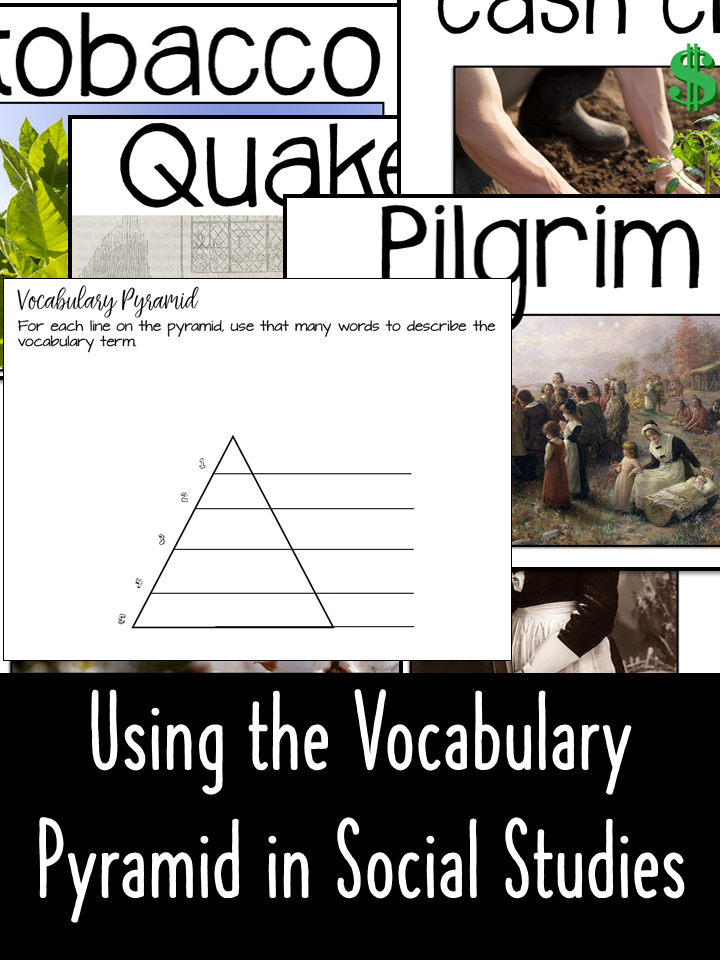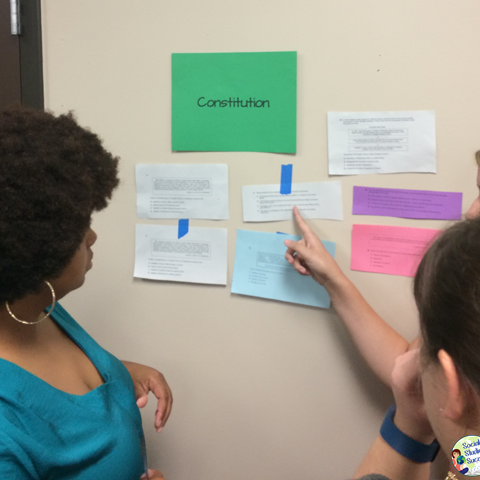“A strategy to unlock vocabulary” by Roderick Graves, Social Studies Specialist – Holub Middle School
Teaching students academic and content vocabulary is one of the most important components to mastering social studies. There is nothing more deflating than thinking you have done a great job teaching a lesson only to discover that students missed a question on an assessment because they did not understand an academic or content vocabulary term.
One excellent strategy for vocabulary is the Vocabulary Pyramid, which is found in Dawn Vinas’ manual entitled, “Vocabulary Strategies for Social Studies.” The vocabulary pyramid is an efficient and versatile way to ascertain student mastery of a term or concept effectively and efficiently.
With this strategy, students are given a pyramid divided into five horizontal lines representing five levels of difficulty. Each line of the pyramid is numbered top to bottom with the number one at the top and five at the bottom of the pyramid. Each numbered line of the pyramid represents the number of words students must use to define the vocabulary term. For example, if students are given the word “liberty” for level one at the top of the pyramid, students must define “liberty” in one word. Students could define the term “liberty” in one word using the term “freedom.”
Based on the students’ definitions, an educator would immediately be able to determine whether students have mastered the terms given and be able to reteach the words students struggled with. The pyramid is also good for achieving a high level of rigor and engagement. An educator can “scaffold” vocabulary by selecting words that have increasing levels of difficulty, which benefits English Language Learners (Emergent Bilingual), special education students, advanced or on-level students. One could select five words related to a particular concept, unit, or theme, which would help students understand the relationship(s) between those words.
The pyramid also provides a myriad of choices for implementation and engagement. A teacher could randomly assign the words to the levels, purposefully assign more difficult terms to the higher levels of the vocabulary pyramid or allow students to decide which words will be used for each level. Students could complete the activity individually or in small groups.
Within groups, students could compare their pyramids, justify their definitions, and explain why they put certain words at certain levels.
One could choose one vocabulary term and ask students to define the word in decreasing order from five words to one word, increasing the level of difficulty and reinforcing the term or concept. Furthermore, students could also draw a picture of each term, adding an additional layer of interaction and rigor.
The vocabulary pyramid is an excellent strategy and an effective assessment tool. It is efficient, engaging, diverse, and rigorous. It is appropriate for all ages and types of learners and is an effective tool for instruction, intervention, and review.






